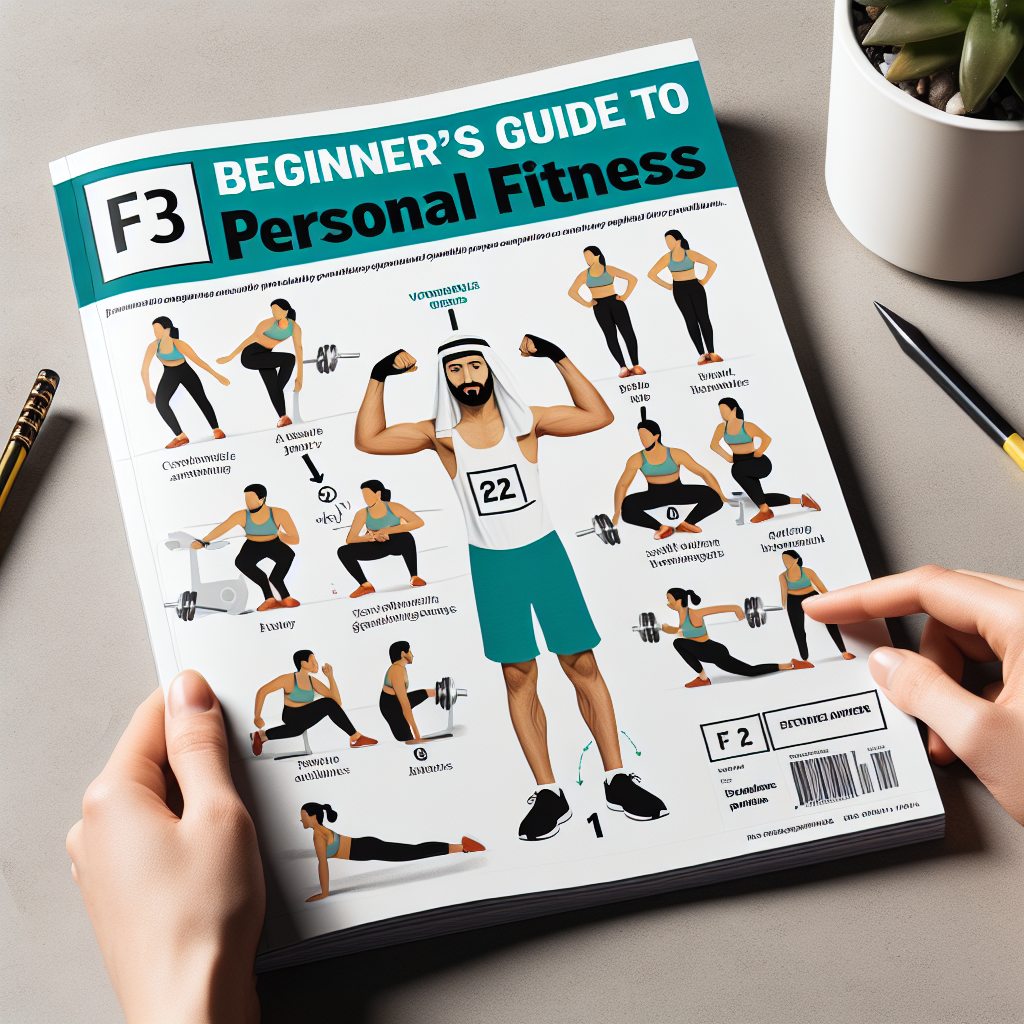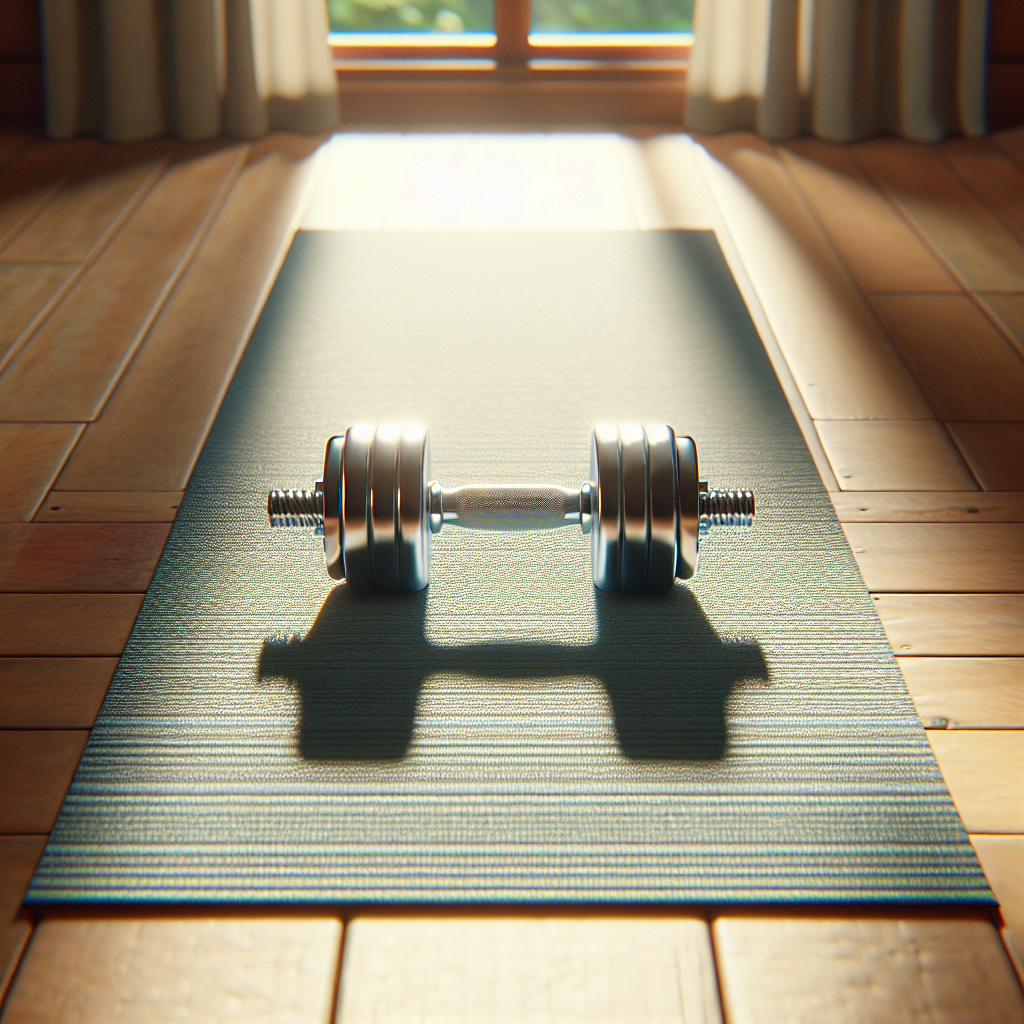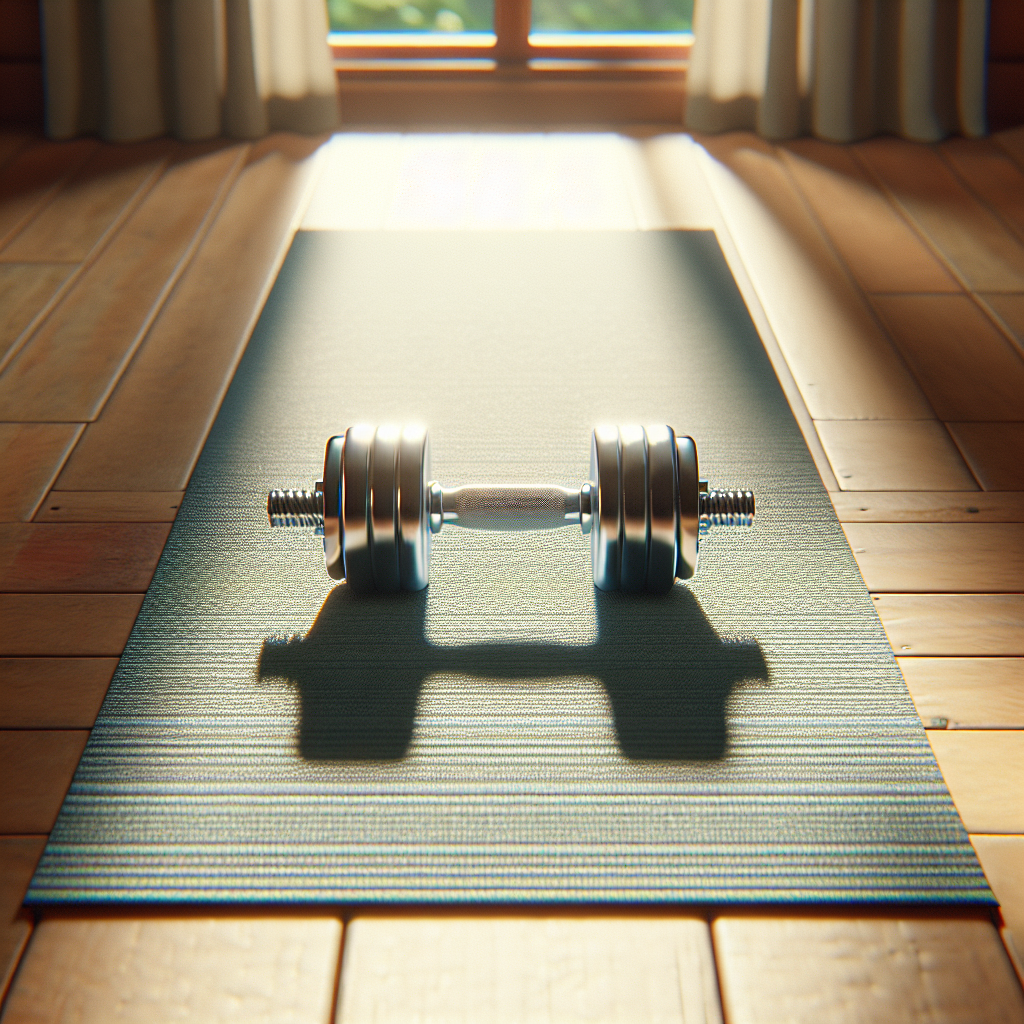So you’ve made the decision to embark on a fitness journey and create your own personalized fitness routine – congratulations! In this article, we will guide you through the process of crafting your very own fitness routine, especially designed for beginners. From setting realistic goals to finding enjoyable activities, we will provide you with all the information and tips you need to kickstart your fitness journey and set yourself up for success. Let’s get started!

Choosing Your Fitness Goals
Assessing Your Current Fitness Level
Before embarking on your fitness journey, it’s important to take a step back and assess your current fitness level. This will help you set realistic goals and tailor your workouts to your individual needs. Start by evaluating your cardiovascular endurance, muscular strength, flexibility, and overall stamina. You can perform simple fitness tests such as timed runs, push-ups, and flexibility exercises to gauge your baseline fitness level.
Setting Realistic Goals
Setting realistic goals is crucial for long-term success. It’s easy to get caught up in the excitement and set unrealistic expectations for yourself. Instead, aim to set goals that are achievable and sustainable. For example, if you’re just starting out, aiming to run a marathon within a month might not be the most realistic goal. Instead, focus on gradually increasing your running distance and improving your endurance over time.
Identifying Your Motivation
Motivation plays a key role in sticking to a fitness routine. Take some time to reflect on what motivates you and keeps you driven. Is it the desire to lose weight, improve your overall health, or boost your confidence? Identifying your motivation will help you stay committed, even on days when you might not feel like exercising. Write down your reasons for getting fit and revisit them whenever you need a little extra push.
Determining Your Exercise Preferences
Exploring Different Workout Types
Not all workouts are created equal, and finding the ones that align with your interests and goals is essential. There’s a wide variety of exercise options available, from running and cycling to yoga and weightlifting. Try out different types of workouts to see what resonates with you the most. Experiment with group classes, online workouts, or even hiring a personal trainer to get a taste of different exercise modalities.
Considering Your Schedule and Lifestyle
When crafting your fitness routine, it’s important to take into account your schedule and lifestyle. Be realistic about the time you can dedicate to exercise and choose activities that fit seamlessly into your daily routine. If you have a busy work schedule, consider shorter, high-intensity workouts. On the other hand, if you have more free time in the evenings, you might incorporate longer yoga or Pilates sessions.
Finding Activities You Enjoy
Engaging in activities you enjoy is the key to maintaining a lifelong fitness routine. If you hate running, forcing yourself to run every day will soon become a chore. Instead, find activities that bring you joy and make you excited to exercise. You can try dancing, hiking, swimming, or even joining a sports team. Remember, fitness shouldn’t feel like a punishment; it should be something you genuinely look forward to.
Creating a Weekly Exercise Schedule
Deciding on the Number of Weekly Workouts
When creating your exercise schedule, it’s important to determine the number of weekly workouts that align with your fitness goals and lifestyle. Aim for a balance between consistency and adequate rest. If you’re just starting out, three to four workouts per week is a good starting point. As you progress, you can gradually increase the frequency of your workouts. Listen to your body and make adjustments as needed to prevent burnout or injury.
Balancing Cardiovascular and Strength Training
A well-rounded fitness routine should include both cardiovascular and strength training exercises. Cardiovascular exercises, such as running or cycling, improve your heart health and help burn calories. Strength training, on the other hand, builds lean muscle mass, increases your metabolism, and enhances bone density. Find a balance between the two by alternating between days of cardio and strength training or incorporating hybrid workouts that combine both.
Incorporating Rest Days
Rest days are just as important as workout days. They allow your body to recover and rejuvenate, reducing the risk of overtraining and injury. When creating your weekly exercise schedule, make sure to include at least one or two rest days. Use these days to engage in active recovery activities, such as gentle stretching or yoga, to promote blood flow and flexibility without putting excessive strain on your muscles.
Designing Your Workouts
Warm-up and Cool-down
Before diving into any workout, it’s crucial to warm up and cool down properly. Warm-up exercises, such as light jogging or dynamic stretching, increase your body temperature, loosen up your muscles, and prepare your cardiovascular system for the upcoming activity. Similarly, cooling down with static stretches and gentle movements helps lower your heart rate gradually and prevent post-workout muscle soreness.
Cardiovascular Exercises
Cardiovascular exercises get your heart rate up and improve your endurance. They can be any activity that elevates your heart rate and makes you break a sweat. Running, cycling, swimming, and dancing are great examples of cardiovascular exercises. Aim for at least 150 minutes of moderate-intensity cardiovascular exercise per week, or 75 minutes of vigorous-intensity exercise, spread out over multiple sessions.
Strength Training
Strength training is essential for building muscle, toning your body, and increasing overall strength. It can be done using free weights, resistance bands, or your body weight. Focus on compound exercises that target multiple muscle groups, such as squats, deadlifts, push-ups, and pull-ups. Aim for two to three strength training sessions per week, allowing at least 48 hours of rest between each session to allow your muscles to recover and grow.
Flexibility and Mobility Training
Flexibility and mobility training are often overlooked but are key components of a well-rounded fitness routine. They improve joint range of motion, prevent muscle imbalances, and reduce the risk of injuries. Incorporate static stretching, yoga, or Pilates into your workouts to enhance flexibility and mobility. Aim to stretch all major muscle groups at least twice a week and hold each stretch for 15-30 seconds.

Selecting Suitable Exercise Equipment
Understanding the Basics
Selecting suitable exercise equipment can enhance your workouts and help you reach your fitness goals more effectively. When starting out, focus on fundamental equipment such as comfortable workout clothes, a good pair of athletic shoes, and a reliable water bottle. As you progress, you might consider investing in additional equipment like resistance bands, dumbbells, or a yoga mat to add variety and challenge to your workouts.
Considering Your Budget and Space
The type of exercise equipment you choose will depend on your budget and available space. Gym memberships can provide access to a wide range of equipment but can also be costly. If you prefer working out at home, consider investing in versatile equipment such as adjustable dumbbells or resistance bands, which can be used in various exercises. Keep in mind your living space and storage options when selecting equipment.
Options for Home Workouts
Working out at home has become increasingly popular, especially with the convenience and flexibility it offers. There are countless options for home workouts, ranging from online workout programs to fitness apps and YouTube tutorials. You can find workouts that require little to no equipment, making it accessible for everyone. Experiment with different options to find what works best for you and your home workout space.
Planning for Progression and Variety
Gradually Increasing Intensity
As your fitness level improves, it’s important to gradually increase the intensity of your workouts. This progression allows your body to adapt and continue making progress. For cardiovascular exercises, incorporate interval training by alternating between high-intensity bursts and moderate-intensity recovery periods. In strength training, gradually increase the weight or resistance used as your muscles become stronger.
Periodizing Your Workouts
Periodization involves dividing your training program into specific phases to optimize performance and prevent plateauing. It typically includes cycles of higher and lower intensity workouts, as well as periods of active recovery. Periodizing your workouts ensures that you continue challenging your body while minimizing the risk of overtraining or burnout. Consider working with a personal trainer or fitness professional to help you create a periodized training plan.
Exploring Different Exercises and Techniques
To keep your workouts engaging and avoid boredom, it’s important to explore different exercises and techniques. There is a plethora of workout variations you can incorporate, from trying different yoga styles to experimenting with new strength training exercises. Additionally, exploring different workout environments, such as outdoor workouts or group fitness classes, can keep your routine fresh and exciting.

Accounting for Nutrition and Hydration
Fueling Your Workouts
Proper nutrition plays a vital role in fueling your workouts and maximizing performance. Aim to consume a well-balanced diet that includes a variety of nutrient-rich foods. Prioritize carbohydrates for energy, lean protein for muscle repair and growth, and healthy fats for overall health. Consider having a light snack or meal containing carbohydrates and protein before your workouts to provide the necessary fuel for optimal performance.
Eating for Recovery and Muscle Growth
After intense workouts, it’s essential to refuel your body with proper nutrition to aid in recovery and muscle growth. Include a combination of carbohydrates and protein in your post-workout meals or snacks to replenish glycogen stores and kick-start the muscle repair process. Additionally, make sure to consume enough calories throughout the day to support your energy needs and promote overall health and well-being.
Staying Hydrated
Staying hydrated is often overlooked but is crucial for optimal performance and overall health. Aim to drink water throughout the day, not just during your workouts. It’s recommended to consume at least 8-12 cups (64-96 ounces) of water per day. If you engage in intense or prolonged workouts, consider incorporating electrolyte-rich drinks or consuming foods with high water content, such as fruits and vegetables, to maintain proper hydration levels.
Ensuring Proper Form and Safety
Learning Correct Exercise Techniques
Performing exercises with correct form is essential for maximizing results and minimizing the risk of injury. Improper technique can lead to ineffective workouts and muscular imbalances. Take the time to learn proper exercise techniques by consulting credible sources, such as fitness professionals or reputable online resources. Start with lighter weights or resistance to focus on mastering the movements before progressing to heavier loads.
Working with a Trainer or Coach
If you’re new to exercise or unsure about proper form, consider working with a qualified personal trainer or coach. They can provide guidance, correct your form, and design workouts tailored to your needs and goals. A trainer or coach can also provide accountability and motivation, ensuring that you stay on track with your fitness routine and make progress in a safe and effective manner.
Avoiding Overtraining and Injury
Overtraining and injuries can significantly derail your fitness progress. It’s important to listen to your body and give yourself ample time to rest and recover. Pushing yourself too hard or not allowing enough recovery time can lead to burnout, decreased performance, and increased risk of injuries. Be mindful of any pain or discomfort and adjust your workouts accordingly. Always warm up properly and gradually increase intensity to minimize the risk of injuries.

Tracking Your Progress
Keeping a Workout Diary or App
Tracking your progress is a great way to stay motivated and monitor your achievements. Consider keeping a workout diary where you can note down each workout, including the exercises, sets, repetitions, and weights used. Alternatively, you can utilize fitness apps or wearable devices that track your workout data automatically. Regularly reviewing your progress can help you identify areas for improvement and provide a sense of accomplishment.
Measuring and Celebrating Milestones
Setting milestones along your fitness journey can help you track your progress and stay focused. This could be anything from running a certain distance without stopping, increasing your maximum weight lifted, or improving your flexibility. Celebrate these milestones along the way to acknowledge your hard work and dedication. Treat yourself to a new workout outfit, a massage, or simply take a moment to appreciate how far you’ve come.
Adjusting Your Routine as Needed
As you progress and achieve your initial fitness goals, it’s important to continuously adjust and modify your routine. What worked for you initially may not be as effective as you continue to improve. Be open to trying new exercises, increasing the intensity of your workouts, or exploring different training styles. Keep in mind that fitness is a lifelong journey, and adapting your routine to challenge yourself is key to continued growth and results.
Staying Consistent and Overcoming Obstacles
Creating Accountability
Consistency is key when it comes to achieving your fitness goals. Find ways to hold yourself accountable to your workouts. This could be through scheduling your workouts in advance, finding an exercise buddy, or joining a fitness community. Share your goals with friends and family who can offer support and encouragement along the way. Having someone to be accountable to can help you stay on track, even on days when you may feel unmotivated.
Building a Support System
Surrounding yourself with a support system can greatly enhance your fitness journey. Seek out like-minded individuals who share similar goals or join fitness groups or classes in your community. Sharing your experiences, struggles, and successes with others can provide a sense of camaraderie and motivation. Having others to lean on and celebrate progress with can make your fitness journey more enjoyable and sustainable.
Tips for Staying Motivated
Staying motivated can be challenging, especially when life gets busy or obstacles arise. Here are a few tips to help you stay on track:
-
Set specific, attainable goals: Having clear goals gives you something to strive for and helps maintain motivation.
-
Mix up your routine: Incorporate new exercises, try different fitness classes, or explore outdoor workouts to prevent boredom and keep things fresh.
-
Reward yourself: Set small rewards for achieving milestones along the way. Treat yourself to something you enjoy, such as a massage, a new workout outfit, or a night out with friends.
-
Find a workout buddy: Having someone to exercise with can make workouts more enjoyable and provide an extra level of motivation and accountability.
-
Focus on the benefits: Remind yourself of the numerous benefits of exercise, such as improved mood, increased energy, and better overall health.
Remember, staying motivated is a journey in itself. Embrace the ups and downs and know that progress is not always linear. Have patience with yourself and celebrate the small victories along the way. with perseverance and determination, you can achieve your fitness goals and create a healthy, lifelong fitness routine.

